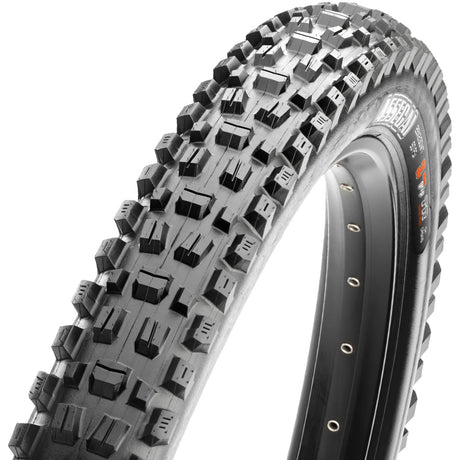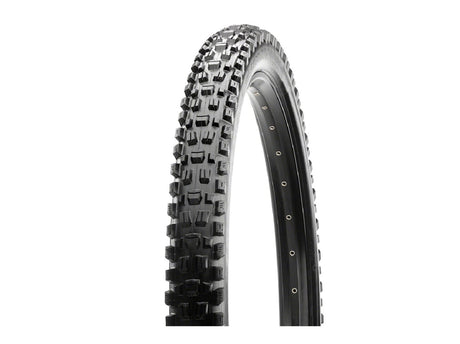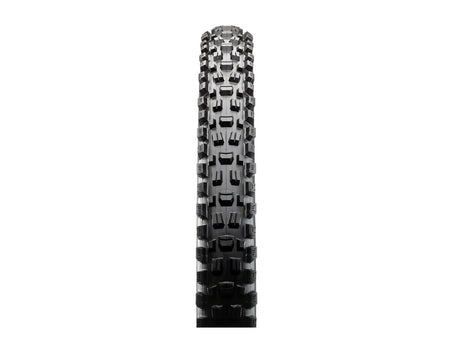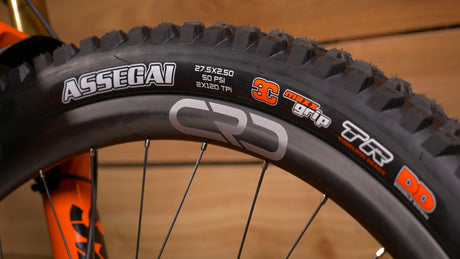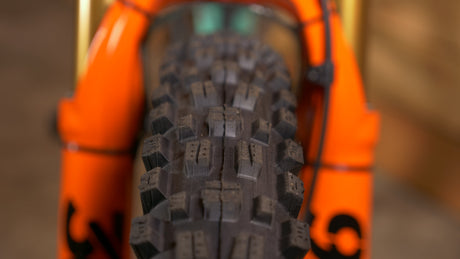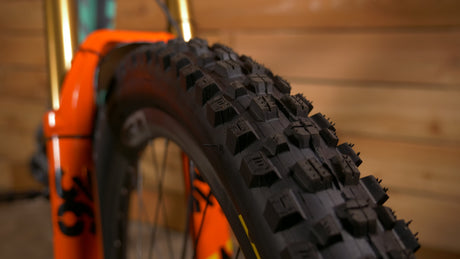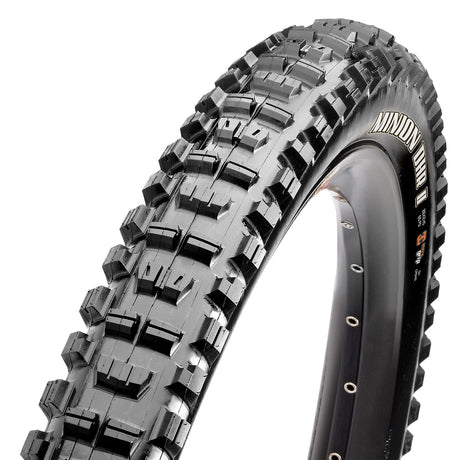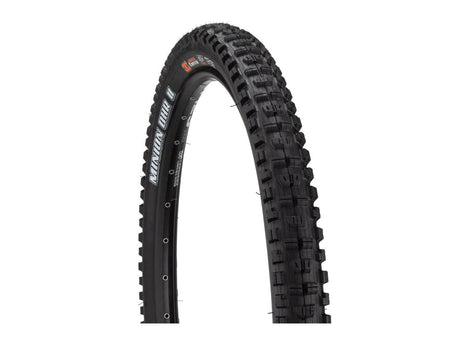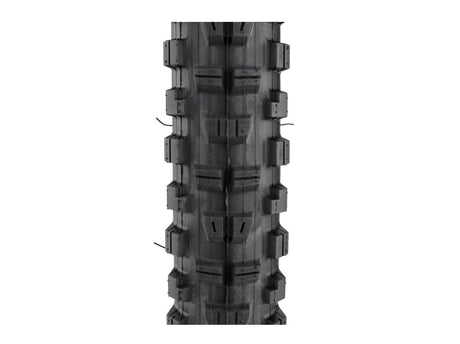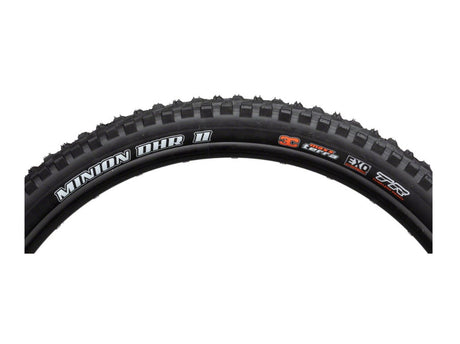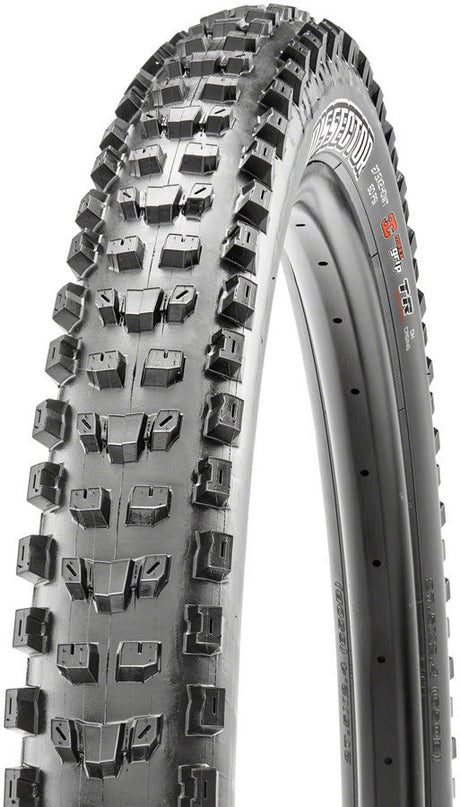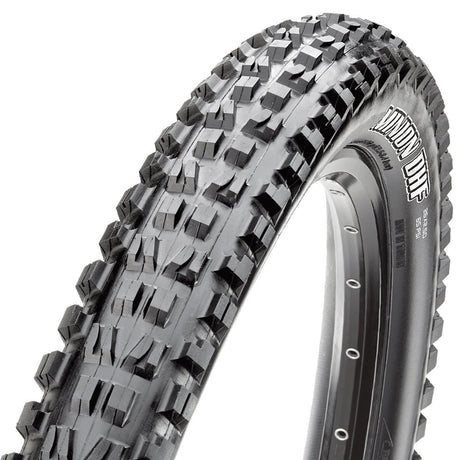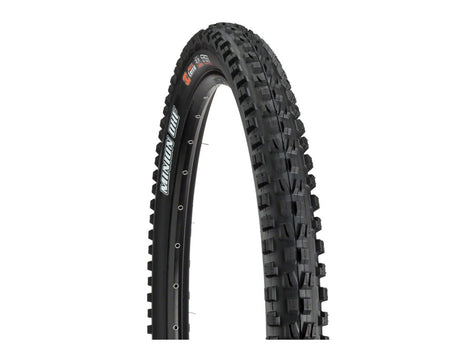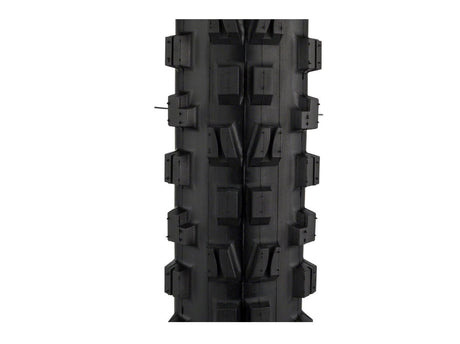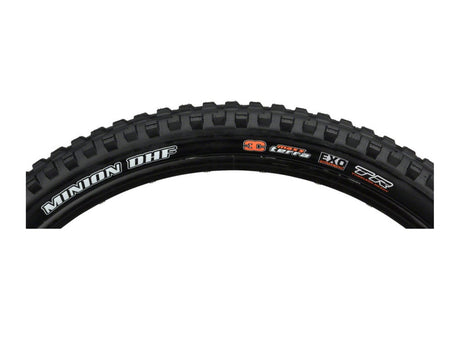Intro
In the Fall of 2020, we put out a video comparing Maxxis rear mountain bike tires, which received lots of love but also lots of comments and questions asking about front tires and the technical jargon Mike and Russ were using. This prompted us to hit the ground running and write some scripts to put out more videos helping all of you decipher what the heck is going on with all of the labels on the side of a Maxxis mountain bike tires.
In this blog, we will compiled each of the videos and blogs that we have posted in the past in one place to provide a wealth of knowledge on one of the best mountain bike tire manufactures in the game.
Before we get going, a quick note: We will be covering compounds, sidewalls, and tires commonly found on trail through downhill mountain bikes. There are plenty of great tires and other compounds from Maxxis designed for Cross Country, and Fat/Plus bikes, but we don't focus on those disciplines at the shop, so we are going to stick to what (we like to think) we are experts in.
Instead of diving into specific tires right away, let us first talk about the technology you will find on most Maxxis tires MTB we sell. After you know which combination of sidewall and compound you desire, it will help make your decision on which combination of tires to go with. Mike and Russ also mention these funny acronyms in later videos, so it will behoove you to know what they are talking about.
Maxxis Sidewalls Explained:
EXO vs EXO+ vs DoubleDown vs Downhill
Over the years, there’s been a bunch of sidewall options from Maxxis, but in this day and age for the tire models for trail through downhill riding, the sidewall options are EXO, EXO+, Double Down and DH. These different options will give you more or less stiffness and support, and more or less puncture resistance. Basically, these different options just refer to how tough and burly the tire is, and the different designs change the weight and riding characteristics of each tire.
EXO: The lightest sidewall (in terms of weight and protection) Maxxis offers. Easy to squish, faster rebound, spins up and rolls quick, easier to stop, lively, more squirmy. Most susceptible to punctures.
EXO+: EXO plus a silk shield layer provides better puncture resistance, adds stiffness and support. Slightly less susceptible to punctures.
DD: Supportive, springier and livelier than DH. Less susceptible to punctures.
DH: Designed for harder impacts, feels more damped and planted than DD. Least likely to puncture.
Depending on a couple of factors (riding style, location, etc.) we often recommend a heavier sidewall in the rear, and a lighter one in the front. The rear wheel takes more impacts, so it's nice to have more support between the trail and your rim.
Maxxis Compounds Explained:
Dual Compound vs MaxxTerra vs MaxxGrip
Maxxis makes three rubber compound options for their trail through downhill tire model range. Dual Compound is the most firm, MaxxTerra is a bit more soft, and MaxxGrip is the softest. Dual Compound is a very basic tire only using (you guessed it) two rubber compounds, while MaxxTerra and MaxxGrip use "3C Technology." 3C Technology utilizes three different types of rubber at various points on the tread to maximize various attributes such as grip and rolling speed.
Dual Compound: Uses two types of rubber; firm rubber at the base of the knobs, slightly softer on center and side knobs. Least grippy, fastest rolling, longest lasting, fastest rebound speed.
3C MaxxTerra: Uses a hard rubber at the base of the knobs, a medium rubber at the top of the center knobs, and a soft rubber at the top of the side knobs. Medium grip, medium rolling speed, doesn't last as long as Dual Compound.
3C MaxxGrip: Shares the same construction as MaxxTerra, but all of the rubbers used are softer. Most grip, slowest rolling speed, slowest rebound speed, wears out the fastest.
In general, we recommend a softer rubber in the front for increased braking traction (since most braking traction comes from the front) and a firmer compound in the back since rear tires tend to wear down faster.
Maxxis Front Tire Shootout:
Assegai vs Minion DHF vs Minion DHR II vs Shorty
In this video, Mike and Russ give an overview four Maxxis front mountain bike tires (even though one of them is designed for the rear) and compare them each head to head. The Assegai, Minion DHF, Minion DHR II, and the Shorty Gen 2 each excel in certain conditions, but does one tread pattern reign king?
The Assegai is our favorite all around front tire - most everyone in the shop has this as a front tire. It excels in dry conditions but does well in wet conditions as well. The Shorty is a mild mud spike tire that does better in muddy and sloppy conditions but is still able to grip on wet rocks and roots. The DHF is a great go-to tire for many people, and the DHR II works great in hard pack conditions. Both Minions work great as front and rear tires.
Maxxis Rear Tire Shootout:
Aggressor vs Dissector vs Minion DHR II
The Maxxis Aggressor, Dissector and Minion DHR II are all designed as rear tires. However, each tire rides quite a bit different from the others! In this video, Russ and Mike give reviews of how each tire rides and then compares them to each other to help figure out which is best for you.
The Aggressor is a playful, fast rolling tire that excels in dry, hard pack conditions. The Dissector rolls fast, is better at cornering than the Aggressor and is good in dry and loose conditions. The Minion DHR II is the best all around tire. It does great in muddy conditions and hooks up quite nicely. The braking traction on the DHR II is the best of the bunch, but it rolls the slowest.
With that all said, I recommend trying different sidewall options and seeing which works best for you. If you know your riding style and terrain, then you should be able to decide which sidewall will match that combo best.
You can also mix’n’match front and rear. Most of your weight is transferred over the rear wheel, so we recommend putting a more firm sidewall option in the rear. For example: If your bike has EXO tires front and rear, try using an EXO+ tire in just the rear. This will keep the weight down, but reduce squirm and increase puncture resistance in the rear tire.
Lately I haven’t been shuttling/chairlift-ing as much, and my preferred tire setup is EXO+ front and Double Down rear on my enduro bike. On a mid-travel trail bike, I prefer EXO+ front and rear. Also keep in mind that tires with thicker sidewalls need less air pressure to feel as supportive as lighter weight sidewall tires. With an EXO tire in the rear, I might run 28 psi, but with Double Down, I’ll run 24 psi since the DD is naturally more stiff.
Last but not least, tire inserts impact the sidewall feel as well. On my enduro bike, I generally always have a Double Down tire in the rear. However, I’ve been experimenting with EXO+ in the rear with a CushCore tire insert. CushCore puts pressure on the tire bead, meaning it’s lending a helping hand to the tire itself when it comes to hanging on and being supportive. I haven’t had a flat tire yet, and it feels quite stable. So far so good, but I would still be hesitant to bring this setup to Whistler Bike Park in fear of sharp pointy rocks.

